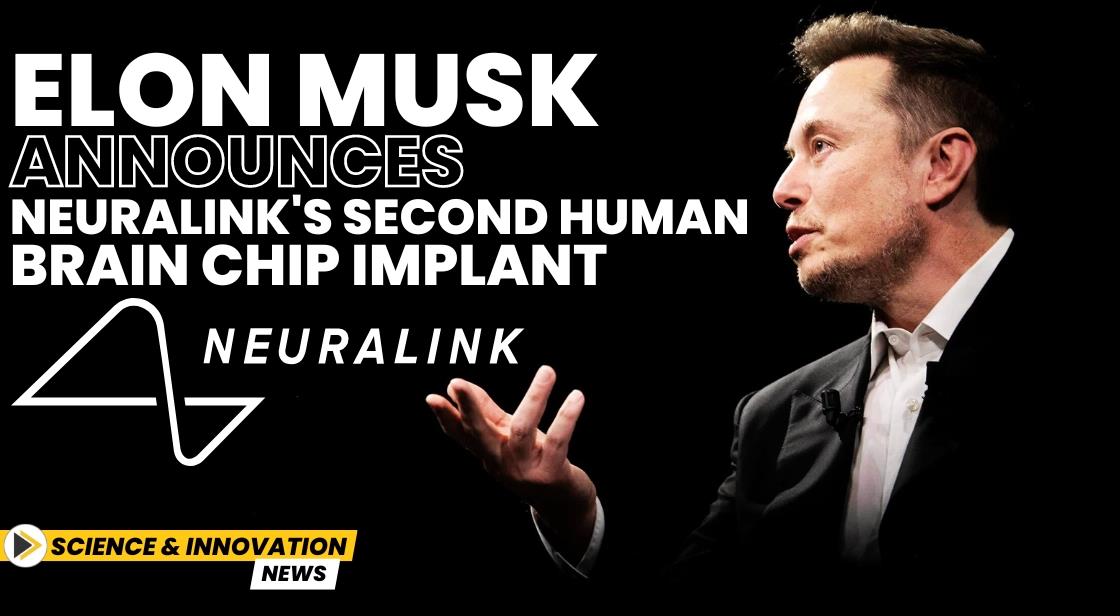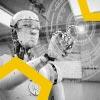Elon Musk Announces Neuralink's Second Human Brain Chip Implant

News Synopsis
Elon Musk’s Neuralink has reached a notable achievement by successfully implanting its brain-computer interface device in a second human patient. This cutting-edge technology aims to enable individuals with spinal cord injuries to control digital devices solely through their thoughts. The breakthrough follows the initial implantation in Noland Arbaugh, which demonstrated the device's ability to facilitate digital interactions such as gaming, browsing, and social media control.
During a recent podcast, Musk provided insights into the progress of the second implantation, revealing that the device is functioning well with its 400 active electrodes. Neuralink's ongoing clinical trials are set to include eight more patients this year, marking a significant step towards broader implementation. The company’s efforts reflect its commitment to enhancing the quality of life for those with severe mobility impairments, positioning Neuralink at the forefront of brain-computer interface innovation.
Device Aimed at Assisting Individuals with Spinal Cord Injuries
Neuralink's brain chip is designed to assist people with spinal cord injuries by creating a direct interface between the brain and digital devices. This device was first implanted in a patient named Noland Arbaugh in January of this year. Arbaugh’s initial trial demonstrated the device’s capability, as he was able to perform various digital tasks, including playing video games, browsing the internet, posting on social media, and controlling a laptop cursor using only his thoughts.
Details of the Second Implant Procedure
During the podcast, Musk provided an update on the second patient’s implantation. Although specific details about the second participant were scarce, Musk confirmed that the individual has a spinal cord injury similar to Arbaugh’s, which was caused by a diving accident. The second patient’s implant has 400 electrodes functioning effectively, according to Musk. The Neuralink device itself is equipped with a total of 1,024 electrodes, aimed at capturing and interpreting neural signals with high precision.
Positive Early Results and Future Goals
Musk expressed cautious optimism about the second implant’s success, noting that the procedure appears to have gone extremely well. He highlighted the significant amount of neural signal data being captured, which indicates that the device is operating effectively.
Neuralink’s immediate goal is to implant the device in eight more patients this year as part of its ongoing clinical trials. These trials are crucial for assessing the device's effectiveness and safety before broader implementation.
Impact on the First Patient, Noland Arbaugh
Noland Arbaugh, the first human to receive the Neuralink implant, also participated in the podcast. He shared his experiences and how the brain chip has positively impacted his life. Before receiving the implant, Arbaugh used a stick in his mouth to interact with a tablet screen. With the new technology, he can now control the device purely through thought, which has significantly increased his independence and reduced his reliance on caregivers.
Call for Participants in Clinical Trials
Neuralink is actively seeking additional participants for its clinical trials, specifically targeting individuals with quadriplegia. The company has issued a call for those interested in exploring new methods of controlling digital devices to join their Patient Registry. This initiative aims to expand the trials and gather more data to refine and enhance the brain-computer interface technology.
Looking Ahead
Neuralink’s advancements represent a major step forward in the field of brain-computer interfaces. The successful implantation in the second patient and the positive feedback from the first participant underscore the device’s potential to revolutionize the way individuals with severe physical disabilities interact with technology.
As Neuralink continues its clinical trials and seeks further participants, the company remains focused on achieving its vision of providing innovative solutions to improve the quality of life for those with spinal cord injuries.
Through these developments, Neuralink is not only pushing the boundaries of what is possible in medical technology but also striving to make a meaningful difference in the lives of individuals with significant mobility impairments.
Conclusion
Neuralink's successful implantation of its brain-computer interface in a second patient marks a pivotal advancement in neurotechnology. This milestone, following the initial trial with Noland Arbaugh, demonstrates the device's promising potential to enable individuals with spinal cord injuries to interact with digital devices through thought alone. The second implant, featuring 400 of the device's 1,024 electrodes, has shown encouraging results, further validating the technology’s efficacy. With plans to expand the trials to eight more patients this year, Neuralink is making significant strides towards transforming the lives of those with severe mobility impairments. The positive impact reported by Arbaugh highlights the device’s potential to enhance independence and reduce reliance on caregivers. As Neuralink continues to refine its technology and seek new participants, it remains dedicated to advancing medical solutions that improve quality of life for individuals with paralysis.
You May Like









